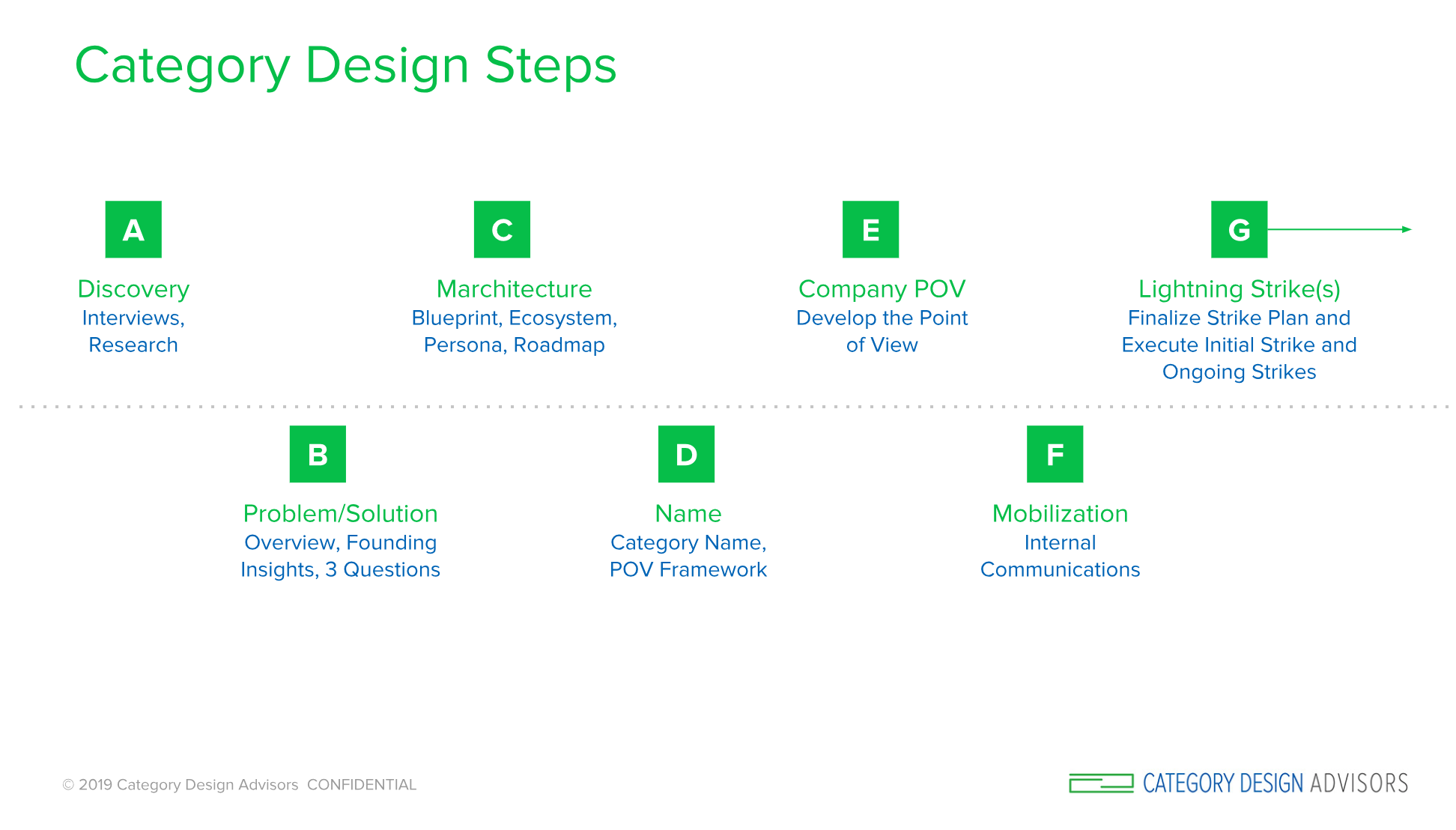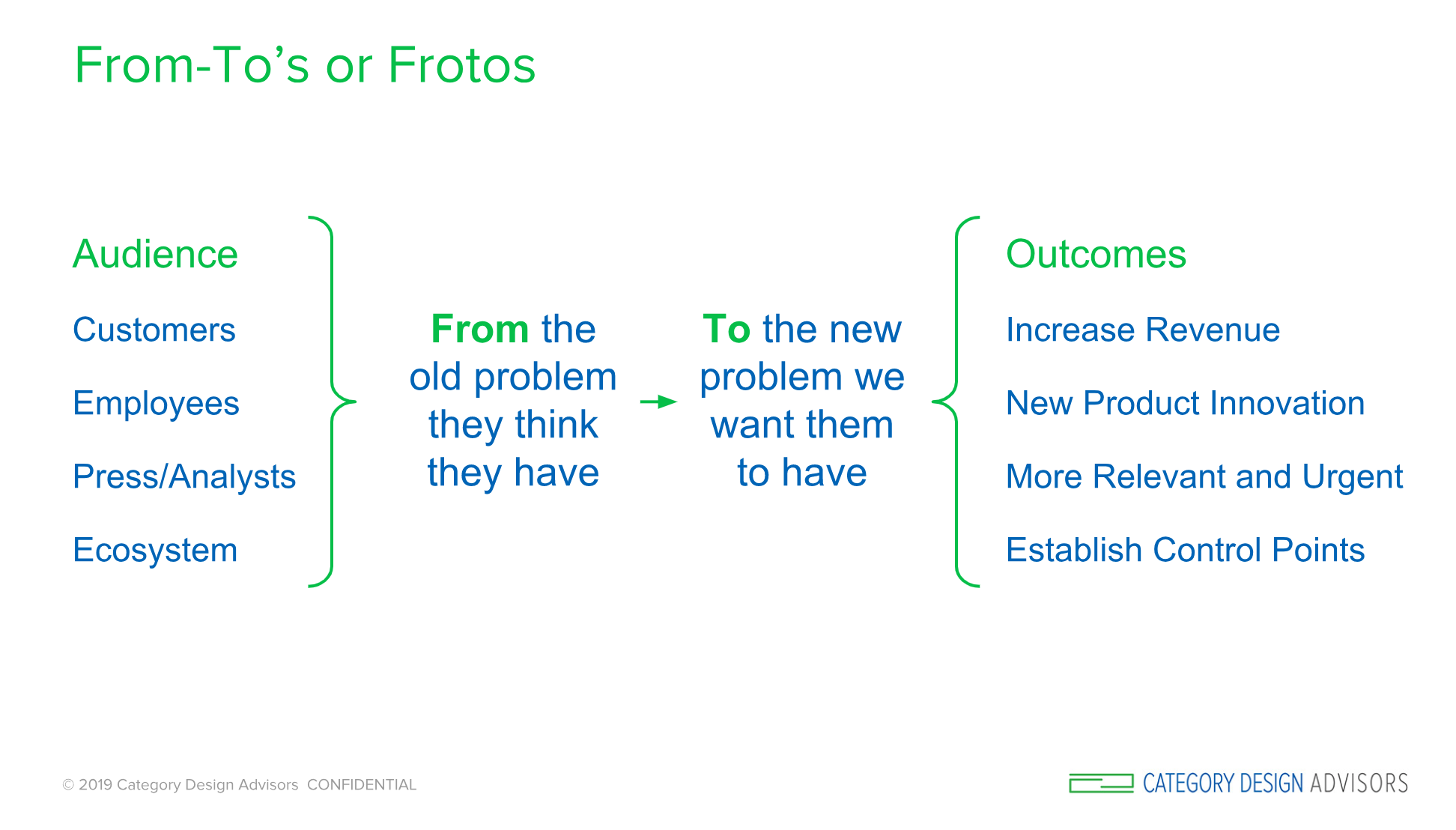Category Design is the discipline of creating and monetizing new markets in a noisy world - Play Bigger book
Part two of our Category Design series worksheets will introduce you to the framework and steps needed to build out a Category Name.

Here you’ll want to come up with general questions and answers about your problem/solution/ecosystem and share with others to gain feedback. This insight will help align your focus.
Example of a general question:
Explain to me, as if I were a teenager, what problem you are solving.
Dave Peterson,
Your blueprint needs to set the agenda and requirements for your category and establish the problem by illustrating it graphically. It’s a visual that represents how the category problem ultimately gets solved, whether or not you have the complete solution today.

The ecosystem paints a clear picture of how customers, developers, and partners interact. It too needs to be a visual that illustrates the flow of your business and all the different connections to your ecosystem as you’re conducting business.
Begin to list out all the connections between your company, its departments (marketing, IT, etc.), and externals as you conduct business.
Department |
External Connections to Department |
When you create your Point of View, you’ll need to adjust messaging based on whom you are talking to about your product/service.
Begin to map out your customer’s concerns and why it’s unique to them - it’ll help you to begin to think differently about your category and know that you’re addressing the concerns of your ecosystem.
Begin to develop descriptions of your various customers in your ecosystem. Include their concerns, what matters to them, and how your problem addresses their concerns.
Customer |
Persona Description |
The Category Name helps the world understand the problem and identifies the audience who is dealing with the problem.
As you’re starting to define the Category Name, keep these components in mind:
Supplies:
Exercise:

A Point of View is an emotional story that appeals to people’s instincts and gut. It communicates the whole Category Design strategy, tells a story, and is easy enough for the audience to understand how you are going to solve their problem.
Basic written format for a 2-Minute POV:

EXERCISE: Work with your team to draft a POV
As you are developing your POV, keep these tips in mind:
| Frame the Problem | Problem Ramifications | Vision for the Future | Outcomes |
| (urgent, strategic) | (pain) | (different) | (valuable) |
Now that you’ve developed your Category Name and POV, it’s time to get your company marching in the same direction. In this phase, you’ll unify the team around the Category Design strategy to communicate your vision.
What are some steps you need to take to mobilize the team?
Lightning Strikes can help align the objectives and goals of your business, and unify the team in a concentrated period of time. Lightning Strikes can be a simple to

What are your
© Techstars 2024 | Privacy Policy | Terms of Use